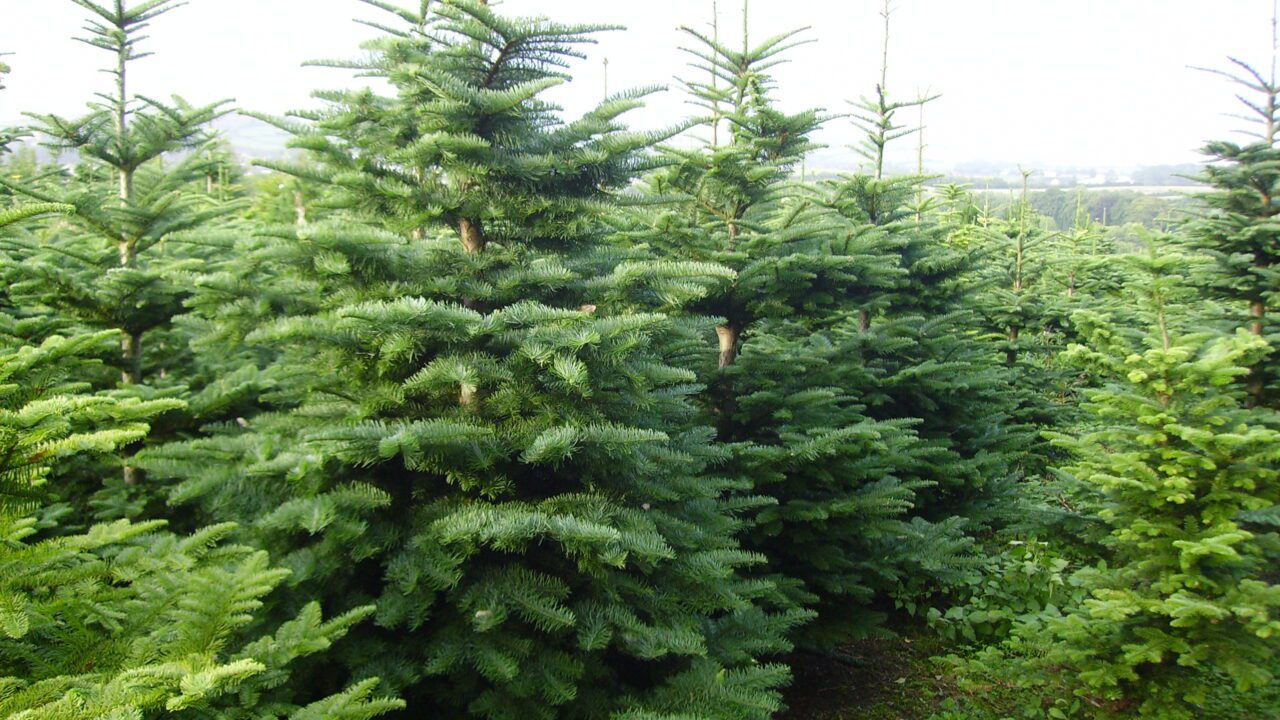As the festive season gets into full swing, a new report has outlined the environmental impact of “real” Christmas trees.
The study was carried out by Fintan Riordan, the owner of Cork Christmas Trees, who has been growing trees for over 30 years.
Riordan is a member of the Carbon Credit Group in Ireland, the Organic Farming Association, and Irish Christmas Tree Growers Association (ICTG).
He used his 360ac of forestry and over 30ac of Christmas trees as a case study for his carbon offset calculations.
Christmas trees
The Cork Christmas Trees Carbon Offset Report notes that trees sequester and store carbon dioxide (CO2) in their stems and roots.
According to Irish calculations, one hectare of 30-year-old forestry sequesters a total of 20 tonnes of C02 every year.
Cork Christmas Trees has 360 acres of mature forestry, the majority of which is spruce, which the report says amounts to around 2,900t of carbon sequestered annually.
“Over 30 years, this plantation of 145 hectares will sequester 600t of C02 per hectare or 87,000t of CO2,” the report claims.

The plantation has 35ac of Christmas trees, mainly Nordmann and Noble Fir, which are much smaller than the mature forestry and comprise a mix of 2ft-30ft trees.
According to Riordan, a total of 92t of CO2 is sequestered every year as a result of these festive trees.
Over 30 years of this rotational crop, a total of 2,772t of CO2 is sequestered, the report states.
Once the trees are cut, the stumps and roots are left in the ground, which accounts for additional carbon storage.
Riordan has a commitment to reforestation, planting two trees for every one that is harvested for the Christmas market.
Carbon
The report notes the “unique” approach taken to producing Christmas trees on the site, 1000m of ditches around the crop provide 2.95t of carbon storage.
There is a total of 4,600m of ditches surrounding the whole perimeter of the entire plantation, accounting for an extra 13.57t of carbon storage.
The trees are surrounded by grass grazed by Shropshire sheep, which Riordan helps the organic matter and structure of the soil.
He also notes that the land is not ploughed to prevent the release of carbon from the soil, while the trees help prevent flooding.
“The tree stores carbon even after its cut. This is also the case for commercial timber. A Christmas tree can then be recycled for mulch which will be stored in the ground,” the report states.
